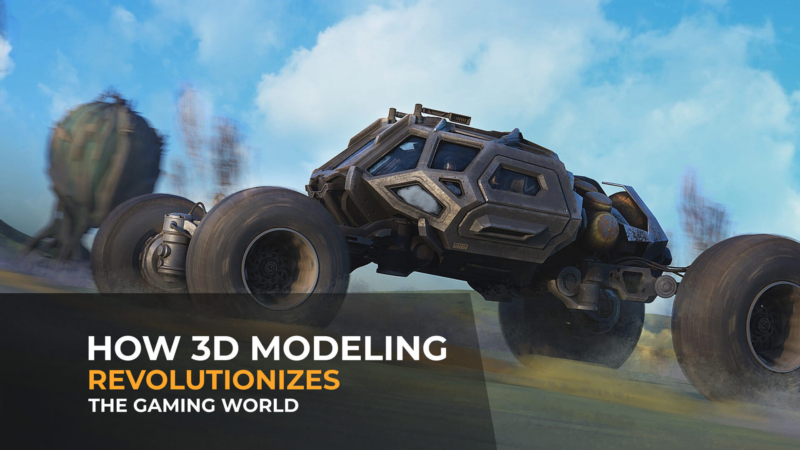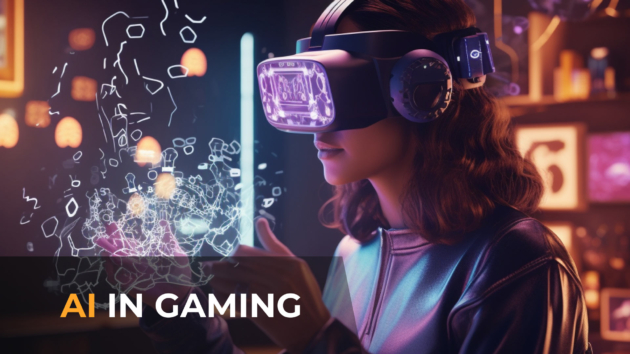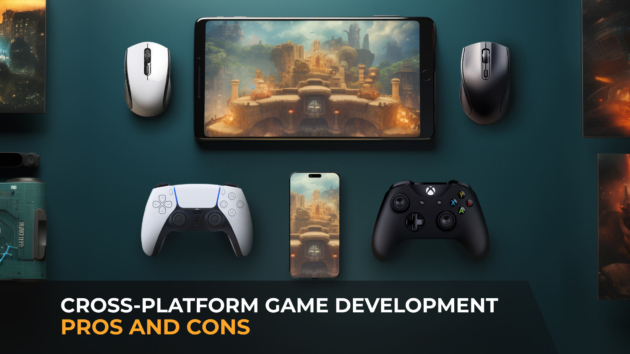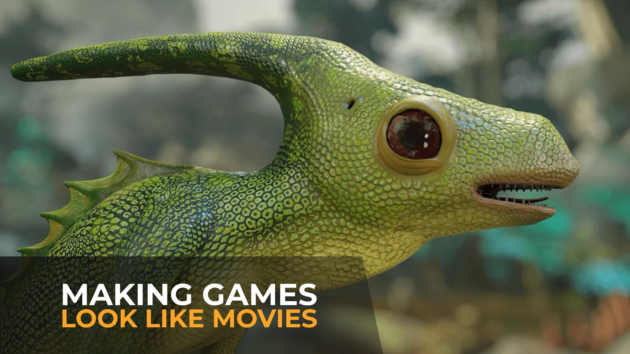The gaming world is constantly evolving, and 3D modeling approaches keep playing an increased part in creating the most modern games. This guide should help you get a grip on the basics of 3D modeling, helping you see what’s what, how it all works, and why it’s so important in the first place.
Without further ado, let’s explore the fascinating world of modeling games in 3D – discover how it brings gaming experiences to life and allows players to embark on thrilling adventures in mesmerizing virtual worlds.
What Is 3D Video Game Modeling, and How Is It Used in Game Development?
Let’s start by understanding what 3D modeling is and how it benefits the gaming industry.
Simply put, 3D video game modeling involves creating three-dimensional representations of objects or surfaces. This process is carried out using specialized software tools designed for 3D modeling.
During 3D modeling, an object’s size, shape, and texture are defined. Specialists use vertices three of which are built the simplest, triangle, and four for polygons to construct 3D shapes. The software uses coordinate data to determine the precise location of each point in relation to a visual reference.
The process of 3D video game modeling goes through several stages to create a polished final product.

Key stages of 3D modeling
Modeling: creating 3D objects and character models by shaping their structure and form using specialized software.
Texturing: adding colors, patterns, and surface details to the models to make them look more realistic and visually appealing.
Rigging: creating a virtual skeleton for a hero or objects to enable realistic movements and deformations.
Animation: bringing the models to life by animating them with movements, actions, and expressions.
Rendering: generating the final images or frames from the 3D scene, including lighting, shading, and reflections.
Compositing: combining different elements, like animations, and visual effects, to create the final image or footage. This stage also includes adjusting colors and adding special effects to enhance the overall visual quality.
These stages are combined to transform 3D models for games into fully realized and visually captivating assets for games, the film industry – you name it. Each stage requires specific skills and software tools, and collaboration among different professionals is essential to achieve the desired results. The market is growing, so experts are always in demand.
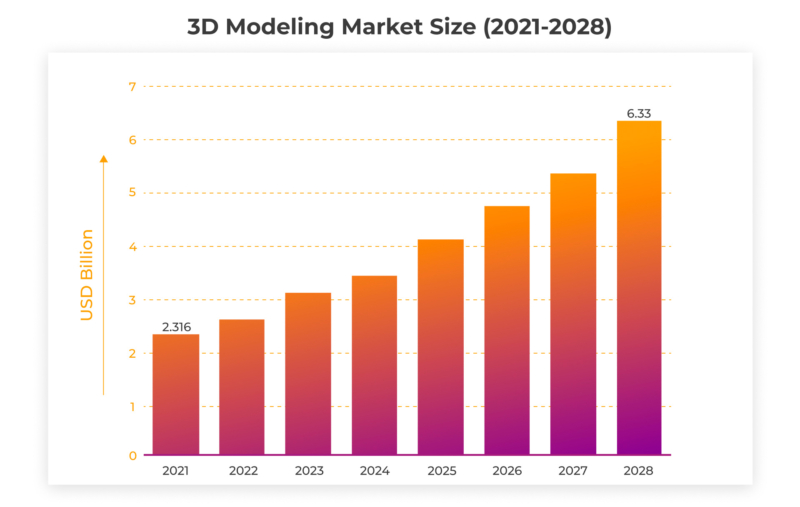
Application in the Video Game Industry: What Makes 3D Modeling so Special?
3D modeling often finds applications in various industries without us even realizing it. Its versatility allows it to be employed in countless ways. However, one of the most prominent and well-known applications is PC, game consol, VR, and mobile gaming.
In video game design, 3D models help create unique heroes, environments, objects, and entire virtual worlds. Immersion is key to delivering an exceptional gaming experience, and 3D modeling for video games is crucial.
This is particularly significant in virtual reality gaming, an intriguing and rapidly growing industry. Virtual reality games fully immerse players in three-dimensional environments, allowing them to explore and interact with captivating digital worlds.
Making games more realistic with 3D video game modeling
Games used to have the simplest pixelated worlds. But today, thanks to 3D modeling for video games, artists can create detailed and lifelike environments that truly immerse players. They use advanced techniques and textures to make landscapes, buildings, and objects look amazingly realistic.
3D video game modeling also helps to make favorite games more immersive by adding things like true-to-life lighting, dynamic weather effects, and natural movements. You can explore vast cities, lush forests, or post-apocalyptic wastelands that feel authentic and exciting.
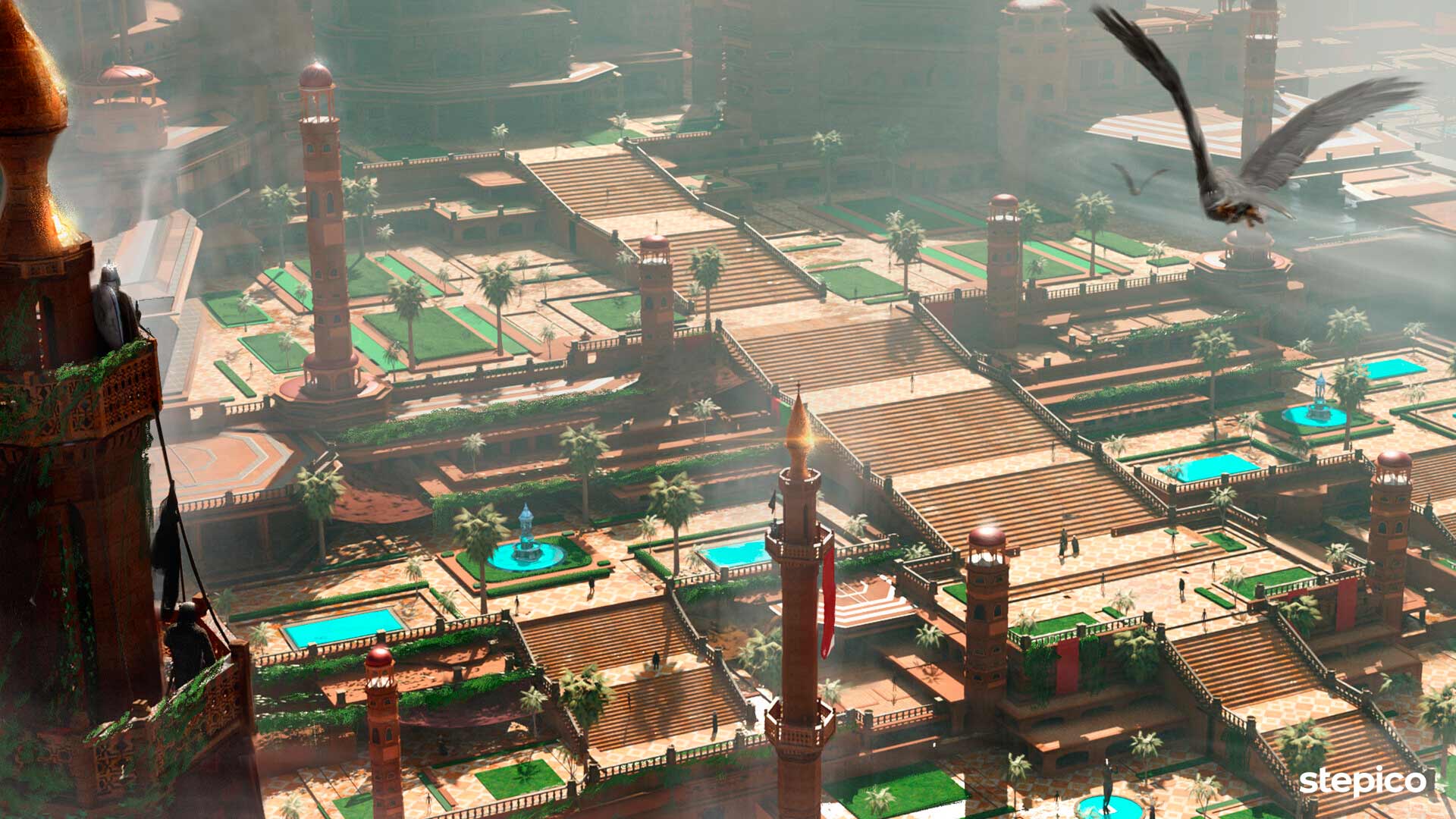
Creating game heroes with personality
The player avatars are a vital part of games, and 3D character modeling has revolutionized how they’re brought to life. Instead of being just a few pixels, the heroes now have depth, personality, and realistic features.
Artists use techniques like motion capture to register real actors’ movements and expressions, making the heroes feel genuine and relatable. They also pay attention to details like facial animation, skin shading, and body physics to make the player avatars look and move realistically.
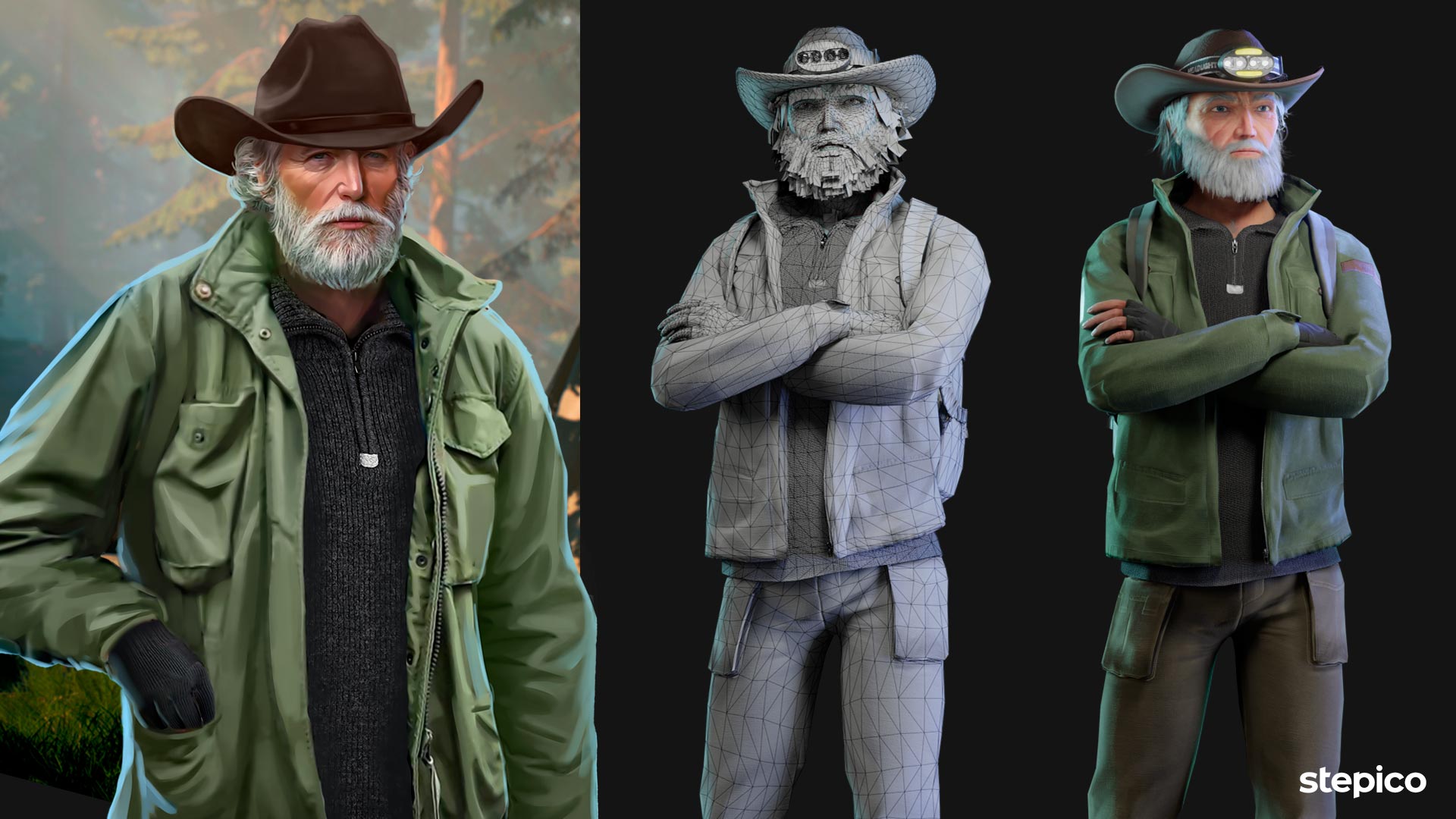
Creating realistic visuals with texturing
To make 3D modeling in video games look more lifelike, texturing is employed as a key part of the design process. It’s like adding detailed touches to bring the game world to life. All in all, adding textures gives depth and richness to the game’s graphics.
Texturing is set off right after the basic 3D models are made. Designers use these models as guides to decide how the surfaces should look. They can choose from a variety of textures to make game heroes and environments stand out. Texturing is the subsequent stage of modeling, and the designer must often go back and forth (from textures to basic models and vice versa), polishing out a model until it all looks just right.
During the texturing phase, designers use a range of tools – from Adobe Photoshop and Blender (to design, draw, and retouch textures as well as render, rig, and all-around work with 3D models) to ArmorPaint and SelfCAD (for custom texturing using complex colors and bump maps as well as the creation of 3D models from scratch right in the browser).
The final goal is to add more layers of detail to the models and grant a visually stunning player experience.
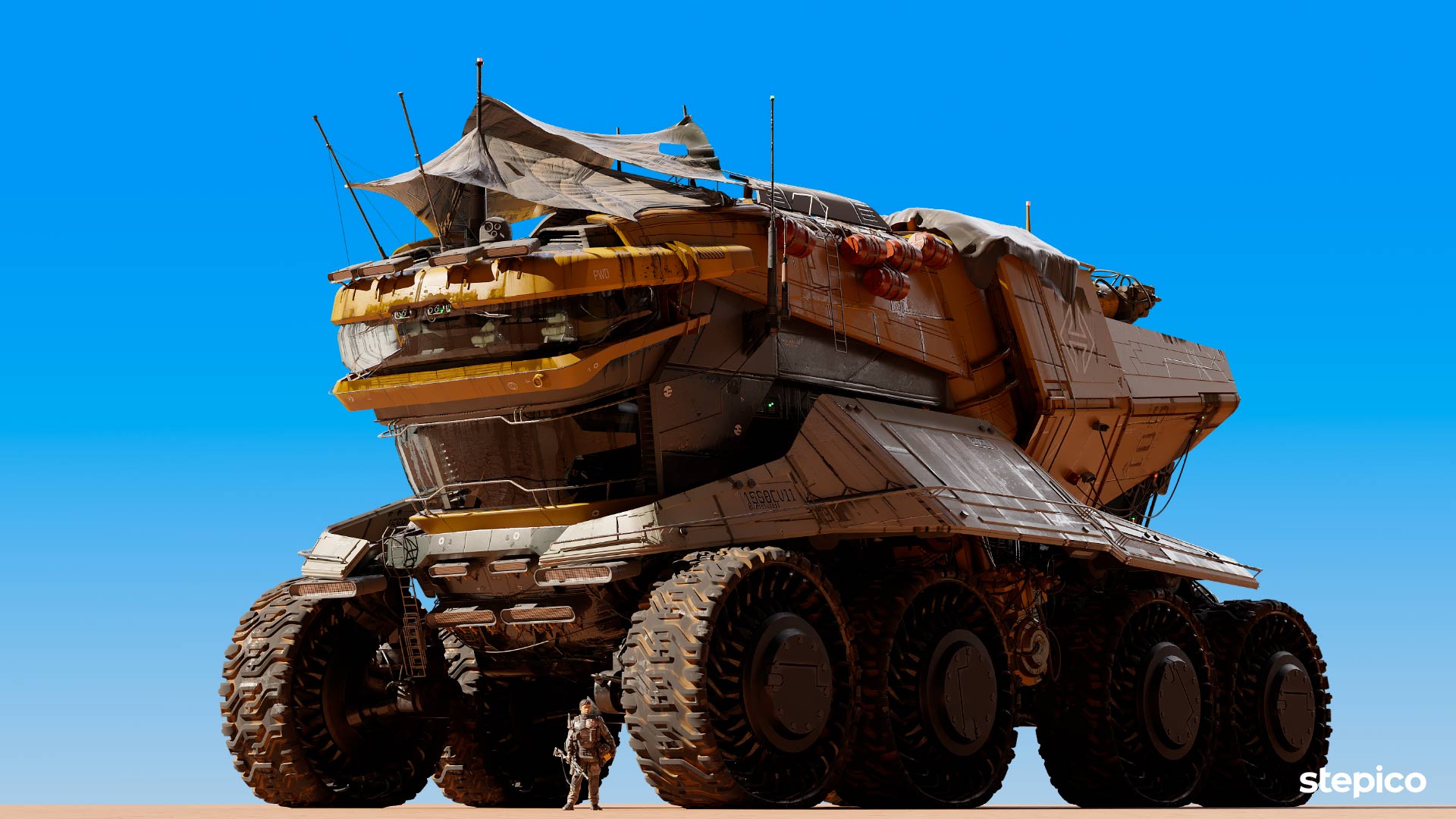
Accurate representation of real life
Sometimes, video games need to recreate real-life objects and places. For example, think of the ancient ruins in Tomb Raider or the historical locations in Assassin’s Creed. While these places are adjusted to fit the game’s style, they are based on real-world destinations.
This is where 3D models are most beneficial. Game developers use drones to capture detailed information about buildings and locations. Then, they use the right software to turn those images into precise 3D models. This allows players to explore and experience realistic versions of these real-life places within the game.
Advancing technology for better graphics
3D modeling has pushed the limits of gaming graphics. Developers always strive to make 3D modeling in video games more visually stunning, so they keep improving the technology. One example is ray tracing, which creates realistic lighting and shadows. It makes reflections, refractions, and shadows look truly lifelike, enhancing the overall visual experience and making the game more immersive.
3D modeling for games has also opened up possibilities for virtual reality (VR) and augmented reality (AR) games. Game developers can transport players into new worlds that blur the line between reality and the game by creating realistic environments and heroes.
Furthermore, AI has grown into an efficient designer’s assistant, enabling the automation of routine tasks and speeding up modeling projects dramatically (solutions like StudioGPT, Meshy, and Pixela AI come to mind as vivid examples of how you can automatically generate high-quality 3D assets).
Some other major 3D modeling technologies used in 3D modeling game development today also include:
1. Motion capture: the technology to capture real-life movements for realistic animations in games/movies.
2. Lighting and rendering: creating realistic lighting effects and high-quality images/videos.
3. Level design: crafting immersive game levels with layouts, terrains, obstacles, and interactive inputs.
4. VR modeling: creating optimized 3D models for virtual reality experiences.
5. AR modeling: integrating 3D models into augmented reality games/apps.
6. UI design: designing attractive and user-friendly interfaces for games.
7. Particle effects: creating stunning visual effects for games (explosions, fire, etc.).
8. Concept sculpting: developing initial 3D sculptures for further design exploration.
9. Cutscenes: crafting cinematic sequences for games with animations and effects.
10. Low-poly modeling: optimizing 3D models for mobile devices or lower graphics capabilities.
11. High-poly modeling: creating detailed 3D models for advanced gaming platforms.
12. Photogrammetry: creating detailed 3D models using photographs for virtual environments.
13. VFX: enhancing game/movie visuals with explosions, weather effects, etc.
14. Prototyping: creating functional 3D models to test game mechanics/interactions.
The Importance of High-Quality 3D Models for Video Game Development
As the world of 3D gaming technology advances, the quality standards for 3D models grow exponentially. So whether you’re new to 3D modeling or an experienced developer, focusing on the end quality is crucial. And an up-to-date take on 3D game modeling gives you all the tools and opportunities to achieve the top results.
Namely, the top reasons why opt for 3D modeling for video games include the following:
Improved visuals. While pixel art still has its charm, the gaming industry is rapidly progressing. Consider creating impressive and distinctive effects to make your game stand out and offer an immersive experience. Utilizing 3D modeling with the help of powerful game engines can elevate your game’s visuals to new heights.
Enhanced user experience. Remember, real people will be playing your game. So prioritizing user experience (UX) and user interface (UI) design is essential. Rather than attempting to create a perfect interface from the start, release a beta version, gather user feedback, and iterate. Clear icons, intuitive menus, and captivating visuals will help players fall in love with your game.
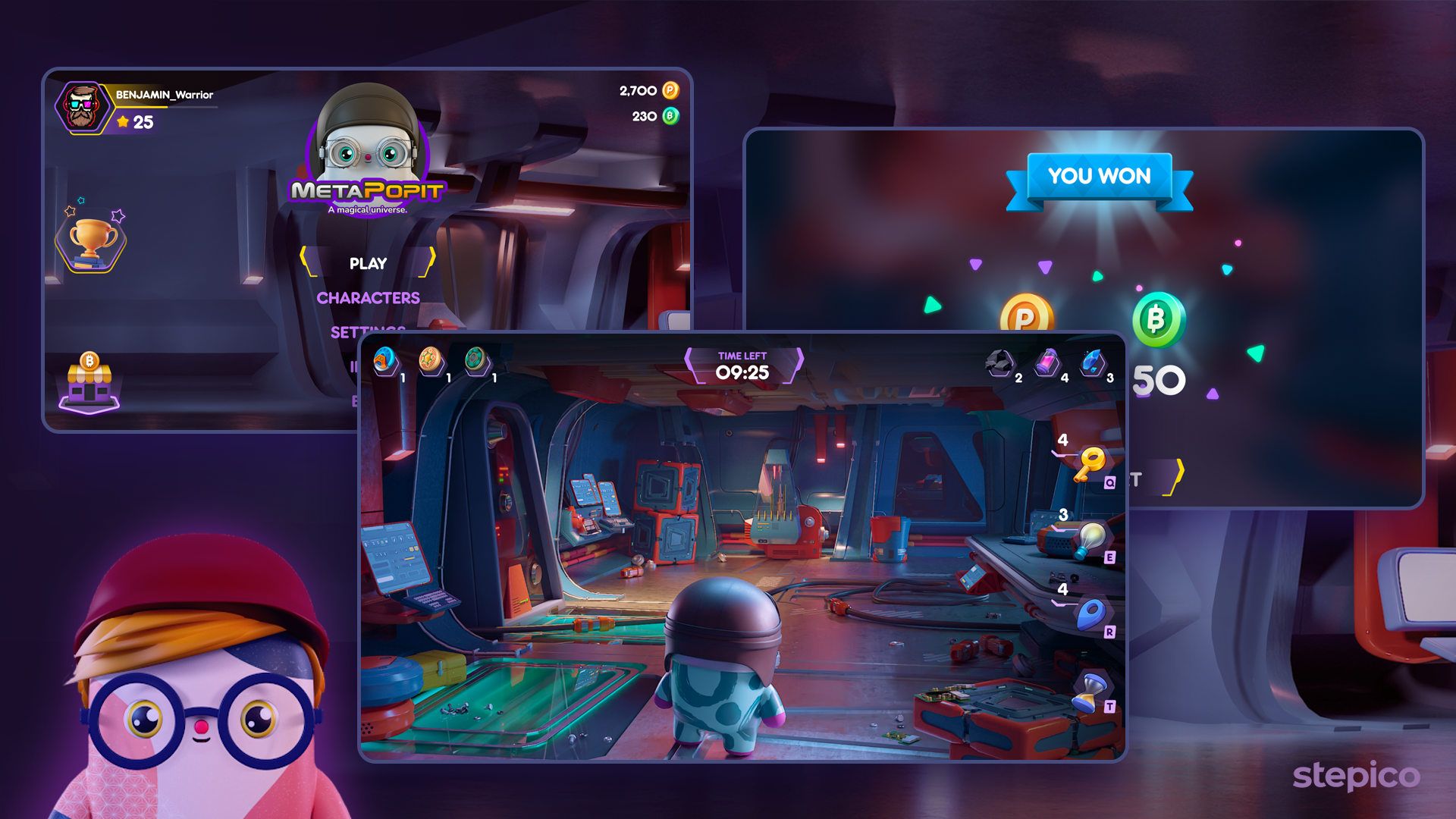
Increased engagement. The highest-quality 3D modeling game with captivating visuals will attract a larger audience. From character portraits to objects, icons, and game environments, optimizing 3D models contributes to the ultimate popularity of your game. Engaging visuals can keep players immersed and invested in your gaming experience.
Boosted sales. If your game stands out from the competition, investors and gaming companies will take notice. Utilizing 3D modeling techniques allows you to differentiate your product in the market. The more impressive your models, objects, and other game elements are, the greater the potential for success and increased sales.
3D Modeling: Making the Game World Truly Special
All in all, 3D modeling for video games is essential for immersive experiences. It brings realism, interactivity, and captivating visuals to games, elevating them beyond reality. With endless artistic possibilities, game designers can create visually stunning and engaging worlds that captivate players’ imaginations, making the gaming experience unforgettable.
If you’re in need of high-quality 3D modeling services, Stepico is the right vendor to turn to. Our game art studio has vast experience working with renowned game publishers like Immutable, Gameloft, and 1×2 Gaming and helped produce successful solutions for large titles. Contact us now, we’ll gladly help elevate your game with top-notch 3D video game modeling.
